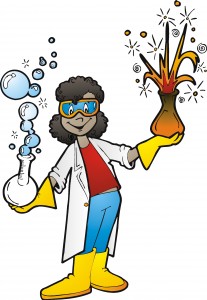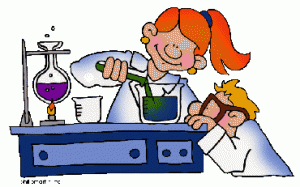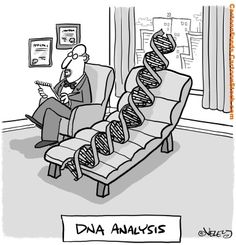MapmyGenome Client Diaries : Why fill in Health History?
Dec 27, 2016
7666 Views
As a communications coordinator, I come across a lot of queries regarding genetic testing/screening. Like every other company, our clientele is precious and resolving their queries in an efficient manner is quite important to us.
I have seen a varied range in age, need for genetic test, manner of approach, ability to interpret and utilise the information provided in the reports. But one query that remains standard throughout all our batches is –
“Why should we fill in our health history?”

And, I assuming that the data is confidential always ask them if there is any issue? Is the form too technical? Would they rather speak to the counselor directly – but that would make the session at;least 2 hours long! Do you not have 30 minutes to spare in a day – would you prefer if I jot down the main points? But the usual reply is …..
“Why do you want our health history? You will copy from it. If I tell you all the health issues I have, you already know what I am at risk for!”

Our scientific team felt obliged to let you in on their well guarded secret! We have it straight from the horse’s mouth! We hope this sorts out any fear you have of filling in questionnaires for MapmyGenome in the future!

Our Senior Research Associate, Rasika Raman explained, “I think it has a lot to do with understanding the customer’s point of view. He or she is unsure about where this detailed questionnaire fits into the process – is it used pre-analysis, does it make a difference during reporting, etc. We try to explain this in a very simple way, since we also want to educate them about the scientific relevance. If you ask anyone from the Lab, they will tell you that samples are not identified by their owner’s history, and that we have an internal ID for everyone’s DNA. I remember telling this customer that we could make the report without the health history and she was quite surprised! (not to mention pleased)
All of us have come a long way, in terms of using technology, advanced measures in healthcare, etc. One such happy change is that an average individual in his or her 20’s wants to know about (and prevent) potential risk for everything, from for a serious condition like stroke or cancer, to less-threatening traits like having a poor memory. At the end of the day, genomics is meant to provide better solutions to everyone. The best way to do that is to find the strongest link between DNA (genotype) and clinical manifestation (phenotype). How else would you use that information to predict someone else’s risk? So, every bit helps – parents, siblings, grandparents, aunts, uncles – all their history matters. Since the premise of preventive screening is case-control association, we need more and more positive matches – not only does it add value to the test, it also helps our team keep running a continuous validation. This has a lot of math, complex correlations, statistics and all that, but it’s what makes the test work.
Bottom line – genetic testing can be done without your health history, because we are simply looking at certain locations in the DNA. Maybe we can give you a risk score, too. BUT individualistic assessment (which is the the final yet amazing part), personal genomics, tailored strategies, etc cannot be offered – unless it is backed up with valid clinical information. I like to think of it this way – the difference between a uniform and a custom-made outfit. You need to give the tailor the right measurements, else the dress won’t fit perfectly!”

This was further affirmed by our senior genetic counselor Dr. Risha Nahar Lulla, an expert in the field. Time is of the essence during a session, and she would want a client to make the most of it! According to her, “Health history should be filled in and available for counselors to get the basic picture in place. A counseling session is for making the client interpret the genetic report they received, answering queries they have, not for taking down information that the client already has. A genetic report is made with the data received by studying one’s genetic profile from the provided DNA sample. It could or could not match a person’s current or family health history at all! The possibility of a match between the data submitted and generated in a report would only further justify the efficiency of the algorithm being used for processing.”
Since most of the medical conditions included in the Genomepatri are ‘complex genetic disorders’, it becomes important to focus, not only on the genetic risks, but also other lifestyle and environmental factors to provide you a holistic view of the overall risk of specific health conditions.

Life isn’t always that simple and you may still have that sliver of doubt….so how can we help then?
The world may look different to us from the laboratory windows, but we don’t expect the same from you. Our goal is to ensure that the right information gets to you and helps you in making the changes required. So……how about filling the form after receiving the report? That would help your high risks without giving us any information? You may plan your genetic counseling session post it.
Important fields in the Questionnaire
- Demographics – Age, height, weight
- Personal medical history – any current medical conditions, prescribed medications/ treatment undertaken
- The age at which a specific medical condition was diagnosed in yourself or family member
- Your current regimen of physical exercise – intensity level and hours per week
- Your current diet – if you are following a specific diet
Some facts straight from the Lab
- Genotype information of individuals from the same family has a high concordance w.r.t disease profile, number of high-risk conditions, etc.
- Different genes may contribute to the same pathophysiology. Conditions with similar mechanisms, were observed together in the same report – for example, an individual can be at risk for autoimmune disease which includes Crohn’s, gluten intolerance, rheumatoid arthritis and so on.
- For certain conditions, presence of mid- or high-level risk can go back up to three generations and not just first-degree relatives (parents/siblings/children).
- Traits such as eye colour/pigment match the genetic architecture of the population – the gene variant for “brown/black” (dark) eyes has the highest occurrence in all samples.
Benefits of filling in the Questionnaire
- Saves time!! And we all know – time is money $$$
- Allows the counselor a holistic view of your family and current clinical history which helps provide an extremely personalised secondary report!
- Gives you a run-through of your current life – eating habits, family medical history.
So…….how to fill in the questionnaire?
Once you have sent us your sample , we send you a link to fill in. It’s an online form – easy to use! We also provide hard copies of the same, at the time of sample collection. You could fill that in and had it over to the courier. We hope you realise it’s importance now …..c’mon, get set and start filling it now!!!

About the Author
Dr. Pallavi Jain is part of the Scientific Team at MapmyGenome. She has a Bachelors Degree in Biochemistry with Genetics and a PhD in Molecular Medicine (UK). She recently completed an intensive course in IVF from Origio, Mumbai. She enjoys swimming and reading.
Rasika is the product specialist and scientific liaison for MapmyGenome’s personal genomics portfolio. With eight years of experience in sequencing, molecular biology, genetic data analysis and reporting, she currently works in the product team at MapmyGenome. Her key responsibilities include genomics product development, data curation, scientific content creation and management, data analysis and technical support for business development. Her key strength is a robust understanding of consumer genomics, including specialized areas such as pharmacogenomics, nutrigenomics and sports genomics. Rasika is also a certified group fitness trainer and Pilates (Balanced Body) Mat instructor.
